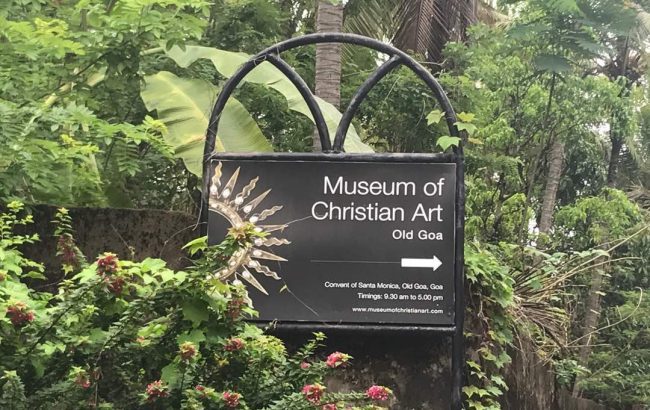Goa has so much to offer in terms of history and culture. Goan and Portuguese cultures have become intertwined and entangled together to bring to you centuries worth of art and history which are big tourist attractions. The Museum of Christian Art (MoCA) in Old Goa is a perfect example of how these cultures are displayed under one roof.
The inception of the Museum of Christian Art
The Museum of Christian Art (MoCA) is the first of its kind in Asia. The museum was founded in 1994 and was originally located at the Rachol Seminary in South Goa. The whole set up was a collaboration between INTACH (Indian National Trust for Art and Cultural Heritage) with assistance from the Calouste Gulbenkian Foundation, Portugal and under the auspices of the Archdiocese of Goa.
However, this location was not central enough for the museum authorities and eventually, the Museum of Christian Art was moved to the Convent of Santa Monica. This particular convent is a famous and highly regarded architectural and religious monument of Old Goa.
The treasures at the Museum of Christian Art
The museum was set up especially to highlight the treasures of Indo-Portuguese Christian art from churches around Goa. The pieces of art that can be found at the museum are from the 17th to the middle of the 20th century.
The museum also highlights the fact that many of its treasures were created by Hindu artists and artisans during the time of the Portuguese colonialism. During that time, it was rumored that religious artwork had a high demand but for various reasons, importing these from Portugal was not possible. Therefore, many Hindu artists were contracted to complete these religious artworks.
Over the years, the techniques used by these Hindu artists were incorporated into Christian Art and a unique style was born. This is evident when one looks and compares older pieces with newer ones. The work took on a more Indian look and feel with the flourishes that Indian art is known for.
What to see at the Museum of Christian Art
The intricately and lavishly embroidered vestments which priests would use to say mass are some of the most popular artifacts in the museum. Along with these is a portable “mass kit” that priests could carry with them when going to say mass in the outlying villages.
There is a beautiful painting of St. Ursula which once adorned the walls of the Se Cathedral, and is now a permanent part of the museum’s collection.
The 17th-century image of Jesus, the Good Shepherd is carved from ivory and is a well-known piece in the museum’s collection.
There is a curious bust of St. Margaret of Antioch which has a well-defined cavity in the chest, meant for the repose of a relic of the saint. In front of the statue is a reclining mythical creature, most probably a dragon.
In addition to these well-known artifacts, there are a number of other pieces on display at the museum. These include chalices and salvers made of precious metals, sculptures, paintings, carvings on wood and ivory, crucifixes and other adornments and implements used in the ritual of holy mass.
Plan a visit to the museum
If one is a history buff and a lover of art and sculpture, the museum is well worth a visit. It’s truly breathtaking to view the melding of two beautiful cultures like the Portuguese and Indian ones that have created so many artifacts of beauty and value.
Please note the street address and contact details below.
Annex, Convent of Santa Monica
Old Goa, 403402
Telephone: +91 832 2285299
Email: [email protected]
NOTE: Photography is not allowed within the museum premises.
For more information, you can check out the GTDC page on MoCA as well as the official website for the museum. (All information is taken from these same sources.)
Also, stay up to date on events with the MoCA Facebook page.
ItsGoa/MAR/KDGP


